
Series: What Early-Stage Founders Need to Know About Hiring
In part four of this series on hiring, I reviewed some key components of the New Hire Welcome packet. Similarly, I provided some best practices for building an effective onboarding workflow.
That post was a bit more high level.
However, this post will dive into the intricacies of building your onboarding workflow. In short, a template.
I will review some of your New Hire Welcome packet must-haves, as well as recommendations for candidate communication, scheduling, and process management.
I’ve put together a set of free employee onboarding templates you can download and customize to fit your specific needs.
The New Hire Welcome packet is a critical component of your onboarding workflow. Not only does it ensure compliance with government regulations, but it also provides legal protection for both you and your new hire. Furthermore, a well-designed onboarding workflow can help new employees feel informed, engaged, and ready to contribute.
Taking time to properly prepare this will help you avoid costly missteps and get new hires off to a smooth start.
The New Hire Welcome packet generally includes a combination of legal and government notices, signed documents, and internal paperwork. Although the below is not a comprehensive list, it provides several examples to get you started.
Please note these documents are specific to the United States. If you’re located in a different country, you’ll need to find out what your local government requires.
First, make sure you thoroughly review the packet contents with each new employee.
Second, ensure all requirements are clearly understood, agreed upon, and signed by both the employee and their manager.
Last, make sure to give them a fully executed version of the New Hire Welcome packet during the onboarding process, via email.
Not necessarily. Some of the documents I listed are “nice to haves” but I highly recommend including them.
Indeed it may seem like overkill for a small startup, but I’ve seen them work first hand.
Yes, at a small startup.
When an employee separates from the company and claims they didn’t understand a particular goal or what was expected of them, their signature ends the conversation.
Have your ducks in a row – dodge the bullets.
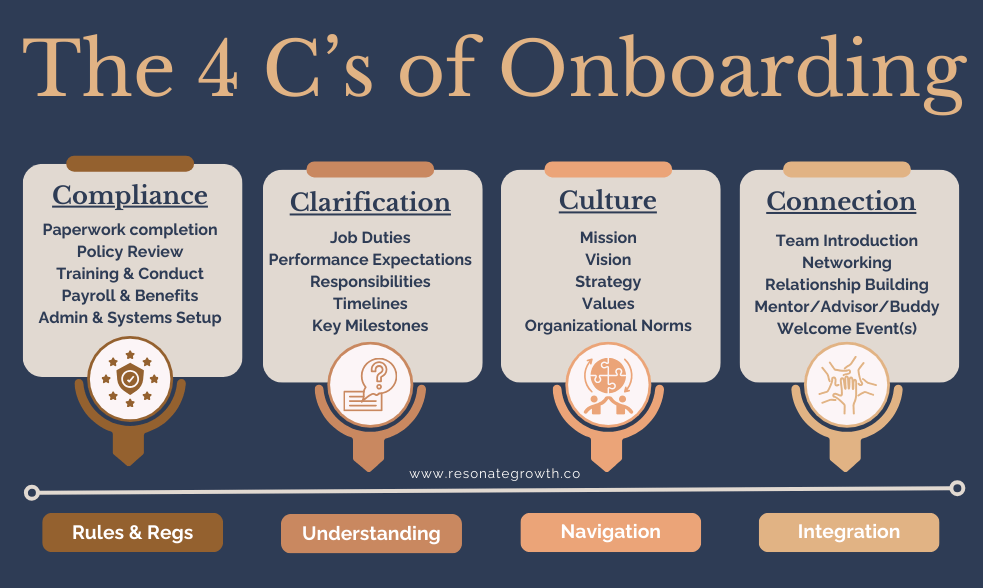
Prioritizing clear and comprehensive communication is the key to successful onboarding.
Once the offer letter has been signed by both parties, it’s time to kick things off. Focus on what they can expect before their first day.
This may be one email or a series of emails; the goal is to arm them with everything they need to know.
Provide them with a schedule for their first week and set expectations. Likewise, highlight any critical deadlines during the process.
This is also an ideal time to encourage existing employees to get in touch and congratulate them on their new role. It’s an excellent icebreaker and contributes to a welcoming atmosphere.
The goal is to provide a white-glove experience by demonstrating your commitment to their early success. Furthermore, advanced preparations will give them an idea of what to expect and, as a result, allow them to prepare accordingly.
Below is a fairly exhaustive list of what to cover in this phase. Choose what works best for your company.
Provide the New Hire Welcome packet, an onboarding presentation or document covering company information. Additionally, if you have one, an employee handbook.
This generally includes:
Ensure they know where to access this information. In an office setting, display mandatory postings in a communal area. For distributed employees, post notices on a company wiki or shared drive to meet compliance requirements.
It’s also to your benefit to include these notices in their New Hire Welcome packet with signature confirmation. Having documented proof that you followed government regulations adds legal protection to your company.
Review all onboarding documents with them. Ensure they understand the benefit options, perks, and expense reimbursement process. Most importantly, where and how to access them.
Connect them with your benefits broker (if applicable) for guidance or questions.
As I noted previously, ensure this information is available on the company’s wiki or in a communal area.
Repetition of information in welcome emails and onboarding paperwork serves a crucial purpose. It ensures new employees have full access to all the necessary details.
First and foremost, leverage their first day as a chance to reinforce what your goals and expectations are at the end of their first two weeks.
Secondly, ensure they understand the various systems they will be using, as well as any stakeholders they should be meeting with and the rationale for them.
Additionally, review what meetings they should attend and when required training should be completed.
Lastly, review your expectations for when they should be “fully ramped up” and in production mode. These milestones could be noted in their onboarding document or separately in a 30/60/90 day plan, for example.
Week 1 should be dedicated to the following:
By week 2 they should be familiar with the systems, have onboarded themselves, and started getting accustomed to any new processes. Use this second week to deep dive into strategy, product, long-term goals, roadmap, etc.
Add any relevant deadlines to their calendar in order to help them stay on track throughout the first month. For example, due dates for selecting medical benefits, submitting necessary paperwork, or completing company training.
Below, I have provided a suggested schedule for their first month. The onboarding/welcome sync is essential and should be the first meeting of the day. After that, feel free to adopt what works best for your organization and throw out what does not.
Develop adaptable templates for each role that you can easily tweak as needed.
While developing these templates requires a bit of a lift at the beginning, the long-term benefits are worthwhile. The success of your company depends on the success of your employees.
Commit to their success and they’ll give you their best.

This is where having an organized onboarding workflow will pay off greatly. Have all your email correspondence written in advance and saved in template form. This will allow you to update them as needed with role-specific details, in a short amount of time. If you’re hiring for multiple roles, it’s also smart to have templates for each department.
Second, as mentioned previously, have an employee handbook, onboarding document, or presentation on file that you can update to apply to each new hire. Alternatively, you can have an onboarding document that is not role-specific and limits changes on your part.
I want to point out that as a small startup you don’t really need an employee handbook and an onboarding presentation. As long as you put the necessary information in front of them, one will suffice.
In order to save you time, I’ve created three different onboarding documents/presentations you can download and customize for free. Click the link below.
Once you have built all your templates and completed your New Hire Welcome Packet, link them to your onboarding checklist. This ensures that everything can be easily found and accessed from one document.
I prefer Google Sheets for its availability, ease of use, and ability to integrate with multiple other SaaS products.
Click the link below to download my free onboarding checklist.
First, create an Onboarding Calendar in Google Drive or whatever platform you prefer. Then populate it with two weeks’ worth of meetings, including recurring departmental and company-wide meetings.
If applicable, have a meeting room and a Zoom link booked on a recurring basis; add it to a static calendar invite.
This will allow you to invite any new hire to the existing event or copy it to their calendar with minimal effort.
Below I’ve provided a suggested structure for a two-week onboarding schedule. Do this by creating a separate Google calendar dedicated to Onboarding under “My calendars.”
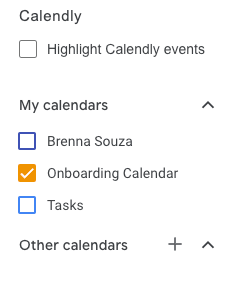
You can use whatever color code you prefer or none at all. Since I spent several years as an Executive Business Partner and Chief of Staff, I find color coding extremely helpful. But if it’s not for you, omit it.
For your reference:
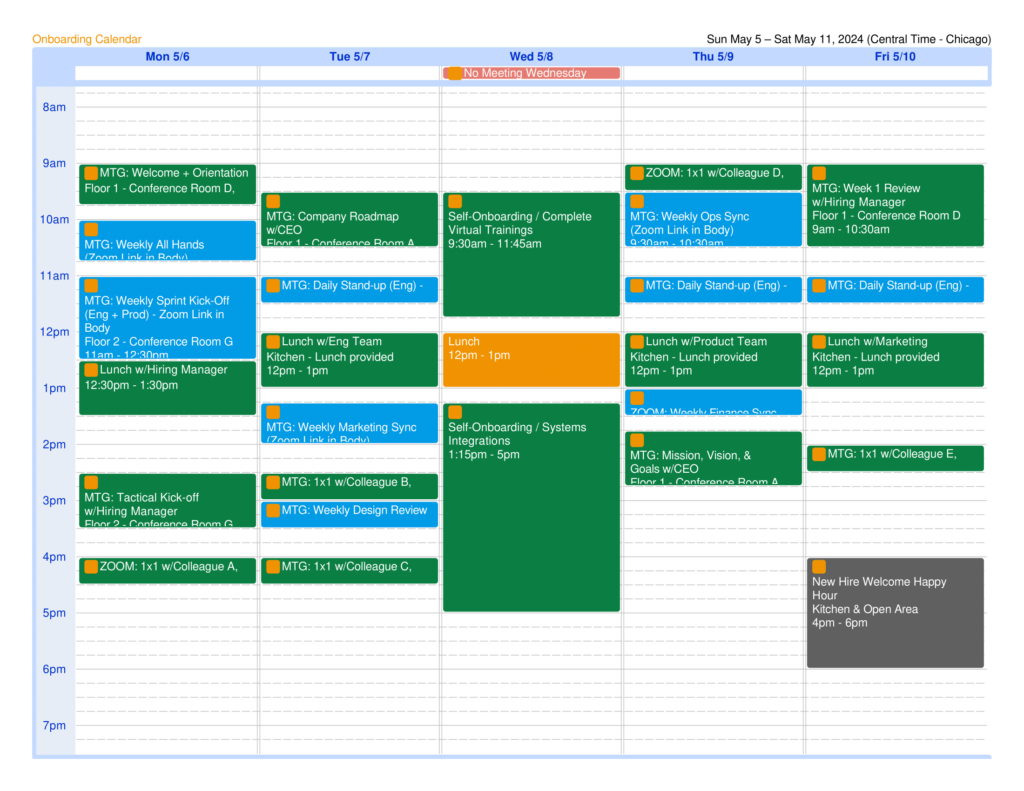
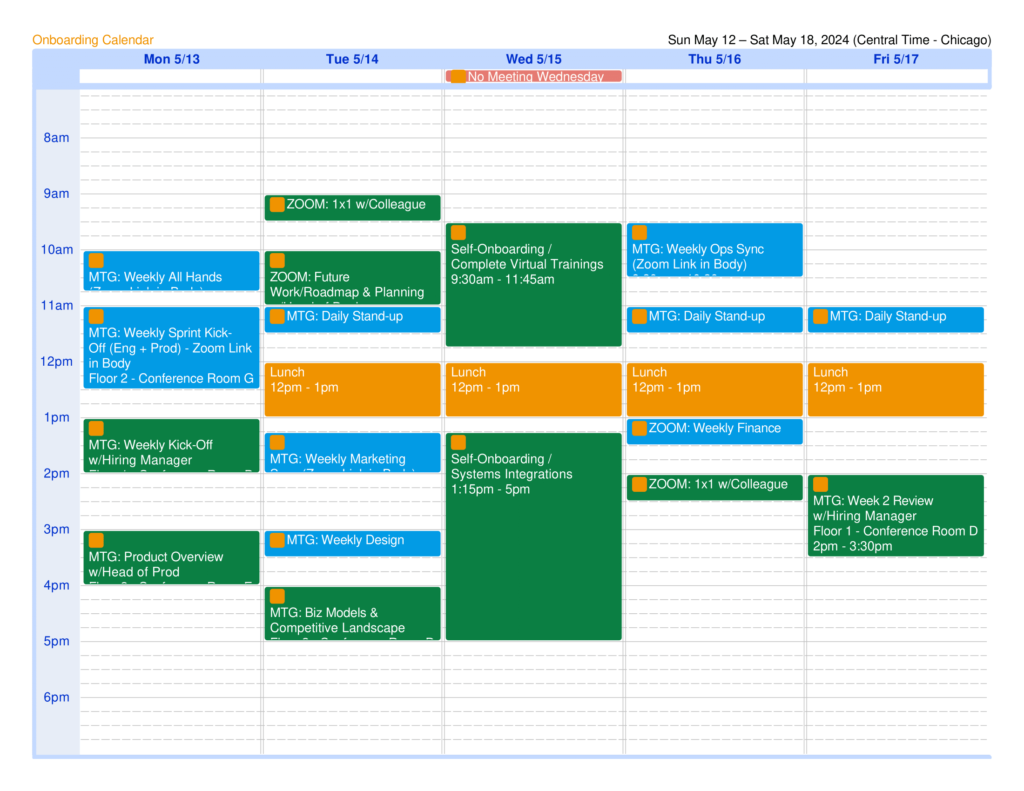
Below is an example of a detailed meeting invitation that makes good use of a template.
The title and body of the invite remain constant so you only need to adjust the meeting location, date, and time as necessary.

Building a comprehensive onboarding workflow and New Hire Welcome packet takes some upfront work, but the benefits are well worth the effort. By streamlining administrative tasks, setting new employees up for success, and creating a positive first impression, you’re laying the groundwork for them to become engaged, productive members of your team.
If you implement the strategies outlined in this post, you’ll be well on your way to onboarding new hires in an efficient, impactful way.
In this blog series, we’ve covered some key elements of hiring in the early stages. From managing distributed teams, tax and compliance considerations, to effective onboarding.
While not the most exciting, getting operations right is critical to scaling a business. Therefore, my goal was to provide a comprehensive playbook to be able to handle things internally or know when to bring in experts.
Don’t skimp on the details, founders. Your future self (and future HR leader) will thank you.
If this sounds great but feels like more work than you have time for, consider outsourcing the process and have your workflows and templates professionally built. A little tip: Resonate Growth can help!
Resonate Growth offers a range of well-developed and simple workflows that can be customized to suit your organizational requirements.
They’ll allow you to implement a simple internal system quickly, without a lengthy implementation process. Thus ensuring a seamless experience for new hires until you’re ready to purchase a more robust HRIS system.
You can visit our Shop and review all the instant download options we offer. However, if you prefer a more personalized solution, book a Discovery Call and let’s connect live!
Straightforward step-by-step instructions built in Google Sheets or MSFT Excel to ensure simplicity and easy integration with your future HRIS tool.
While the majority of my workflows and compliance paperwork are designed with US legal requirements in mind, the underlying internal processes can still benefit small business owners in any country.
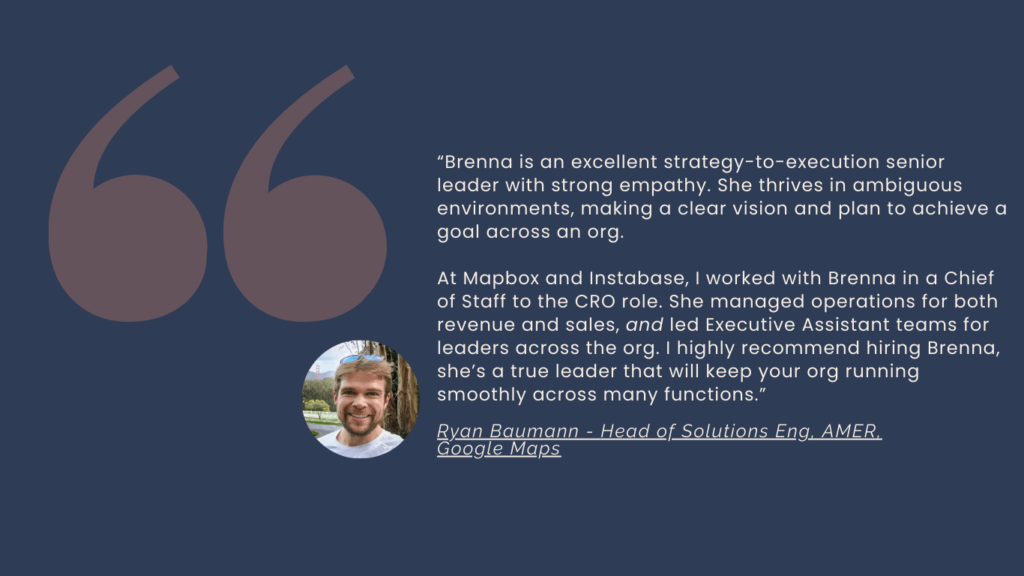

Brenna is a former Silicon Valley operations leader turned startup whisperer, using her own battle scars and tales of victory to guide others through the land of unicorns and disruptors.